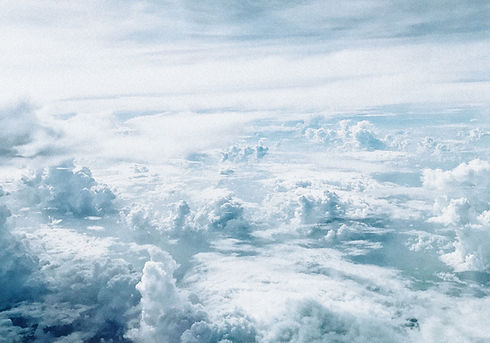

climate Change
& Pollution
Pollution
Explained
Pollution is made up of many harmful substances called pollutants, which negatively affect Earth. Pollutants derive from both natural and human activity. Examples of natural pollutants include different types of ash, fog, sea salt, and ozone, also known as smog (“Pollution,” 2011). Ash can result from events such as a volcanic eruption or smoke from a wildfire. Smog is caused by burning fossil fuels such as coal and oil. When vehicles and factories burn fuels, they are producing pollution from their emission (“Pollution,” 2011). Other human activities that lead to the release of pollutants are the littering of trash and plastic in oceans, the use of pesticides and fertilizers on crops, and second-hand smoke (“Pollution,” n.d.).

Image by rawpixel.com

Image by rawpixel.com
What Causes It?
Along with water and land pollution, air pollution is an outcome of all of these activities. Wind can carry pollutants from country to country, spreading them all over the world. Large cities are typically where air pollution is the worst because the smog gets trapped in a cloud-like substance which forms above the cities (“Air Pollution,” n.d.). Alarmingly, air pollution is contributing to climate change, more specifically, global warming. Global warming is caused by pollutants that get trapped in the atmosphere, leading the temperature to rise. Both nature and humans play a part in global warming, but humans are mostly responsible for it. Climate change is greatly affecting the environment, humans, and wildlife.
How does it affect
Wildlife
Pollution is defined as “the contamination of air, water or soil by substances that are harmful to living organisms.”. Pollution can harm wildlife in 2 main ways. One being the effect of the quality of the environment/habitat they inhabit. And the other being the availability and quality of the animals’ food supply. For example, many air pollutants when consumed, collect and are stored within the animal's tissue, which then transfers over to the predator who feeds on said animal. Another example is a change in PH levels in water, which kills aquatic animals who can’t live in those conditions

Image by rawpixel.com
HOW DOES IT AFFECT HUMANS?
Humans have created revolutionary industrial products that are convenient to humans alone. This has left little to no regard for our impact on the ecosystems and has produced many forms of waste and pollutants that have substantially degraded the environment which has come back to reduce our own quality of life. The most notable types of pollution are air, water and chemical pollutants.
Air Pollution
With air pollution causing approximately 8.9 million deaths annually, it is ranked to be the world’s 4th highest reason of deaths (Larsen). This is due to the many detrimental effects air pollution has on the human body. Exposure to polluted air has a significant declination on the function of human lungs and causes respiratory inflammation. Extended contact with polluted air can even put humans at risk of lung cancer and can even damage the immune systems. Human reproduction can also be affected as exposure to air pollution by pregnant women can alter chromosome structure of the fetus and can increase chances of birth defects (Larsen).
Water Pollution
Water is as essential as the air that we breathe in. The demand for freshwater has been increasing gradually and the global water footprint is estimated to be 9 trillion tons annually. Out of the 9 trillion tons, 280 billion tons of the water are polluted. Consuming polluted water has many detrimental effects on the human body. It can cause many diseases such as typhoid, and hookworm. Water pollution’s main cause is through the production of waste, particularly plastic, metal and lead. These materials are known to cause severe damage to the nervous system, liver and kidney functions. It can also cause rashes, hepatitis, diarrhea, and vomiting (Larsen).
chemical Pollution
With the world continuing to develop, it is with reason that technology and science will also continue to advance. To do this, production of chemical related products will increase and consequently pollute human bodies. The world produces about 250 billion tons of synthetic chemicals a year and these chemicals are ingested by humans. Many of these chemicals have found to be related to causing cancer. A study has shown that a total of 605 different types of chemicals have been found inside of the human blood that has detrimental effects on the human body. 180 of those found has been proven to be directly related to cancer. 217 chemicals found causes decrease in the function of brain and nervous systems. 208 of them increases the likelihood of causing birth defects and abnormal development (Larsen).

(National Geographic, 2012)
What
Are
Some Solutions?
The air in our atmosphere is one of the largest spaces available for us to misuse and pollute; it is not owned privately, and therefore is a mechanism in our dangerously perfect execution of the tragedy of the commons (Jacobson, 2012). While we can understand how humans can limit this primary form of pollution through volunteerism or government action, it is also intriguing to consider the existence and development of modern clean technologies as a substitution for harmful industrial processes.
An evaluation of electric power sources revealed that wind-BEVs and wind-HFCVs, which are processes rooted in the conversion of the kinetic energy of the wind into electricity for general and vehicular use, are tier one technologies. This means that these forms of clean energy performed the best in categories like mortality, climate emissions, footprint, water consumption, effects on wildlife, thermal pollution, and water chemical pollution (Jacobson, 2009).
One of the best ways to combat the evolving and increasing forms of manmade climate damage is to seriously implement modern technologies, most especially using the infinite power of the wind and air that we so heavily depend on.
What organizations are working to solve this problem
According to the World Health Organization, air pollution is the single biggest environmental health crisis we face today. Though Fortunately for us, there are so many organizations that have been formed and are actively researching/problem-solving in hopes of solving the issue. Though there are many, here are just a couple of the top ones. The first one being the Coalition for Clean Air(CCA), which aims to reduce air pollution and increase air quality monitoring across CA mainly through reducing emissions from vehicles. Another is the Union of Concerned Scientists, who know the science behind the endangerment pollution brings to the planet, and encourages the reduction of carbon emissions among the members of the public as well as public leaders to create strategies for climate change solutions. And last but not least, one last organization that is actively working to solve the problem of pollution is the US Environmental Protection Agency(EPA). The EPA not only offers scientifically-backed information on air pollutants and the way it impacts our health, but they have programs and government partnerships to reduce pollution.
Looking to help?
Here are some sample policy letters you can utilize to show interest and become involved in the activities and decisions of your local or federal government through reaching out to your representatives.